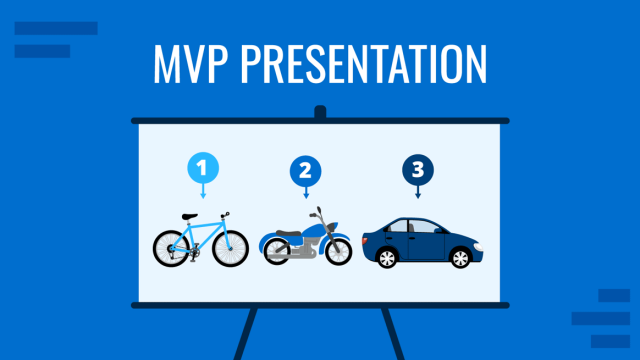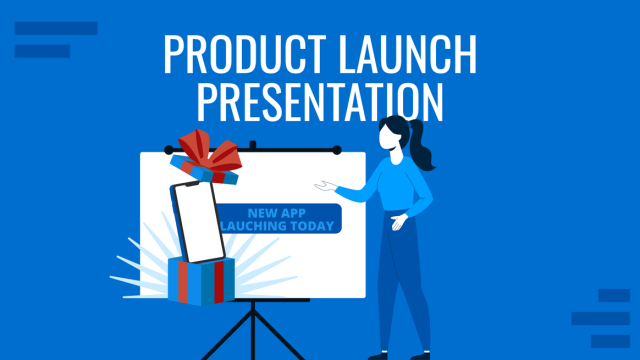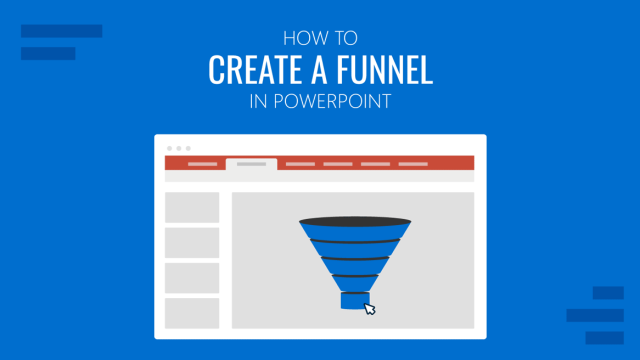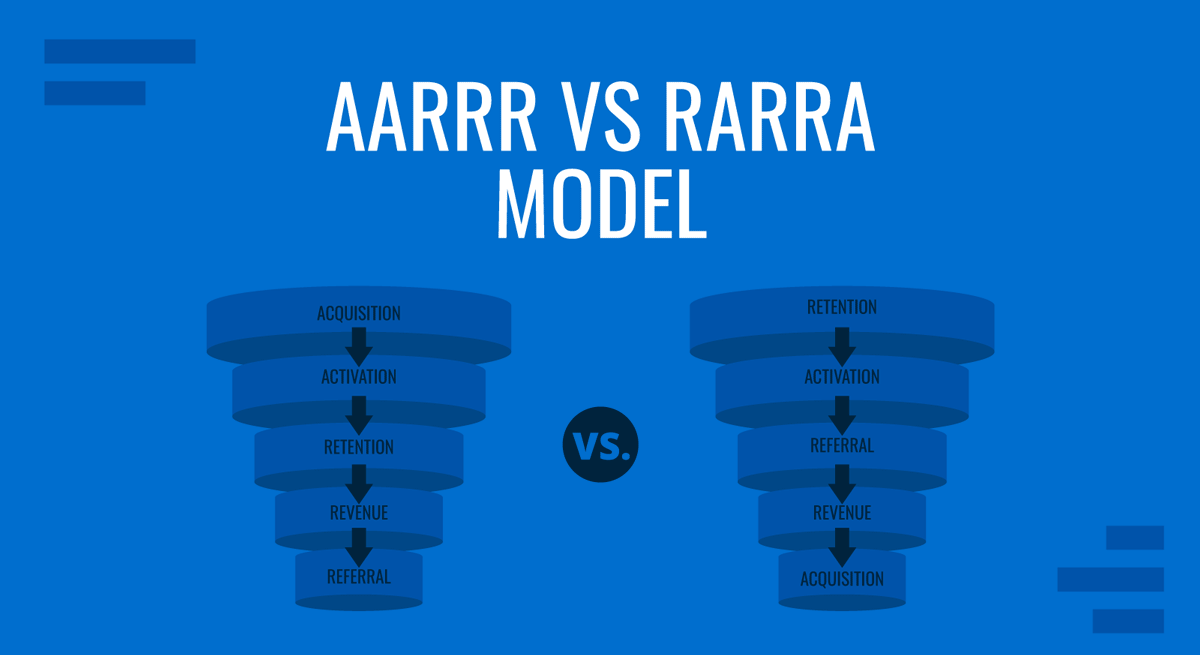
When you’re preparing a product presentation, you’re not just telling a story; you’re giving your audience a framework to evaluate how the product will grow, retain customers, and generate revenue. Two of the most influential models in growth and product strategy are AARRR (Acquisition, Activation, Retention, Referral, Revenue) and RARRA (Retention, Activation, Referral, Revenue, Acquisition). Both capture the customer journey, but they do so in different orders, emphasizing distinct priorities.
In a presentation, these models help align stakeholders around how growth will happen. Just as a product launch presentation aligns teams on readiness, presenting AARRR or RARRA ensures that your audience understands your growth logic, market focus, and the long-term sustainability of your strategy.
What Is the AARRR Model?
The AARRR framework, popularized by Dave McClure, is often referred to as the Pirate Metrics model (because of the “AARRR” sound). It breaks down the customer lifecycle into five measurable stages: Acquisition, Activation, Retention, Referral, and Revenue. Each stage answers a critical business question: How do users find us? Do they have a great first experience? Do they come back? Do they tell others? Do they generate revenue?
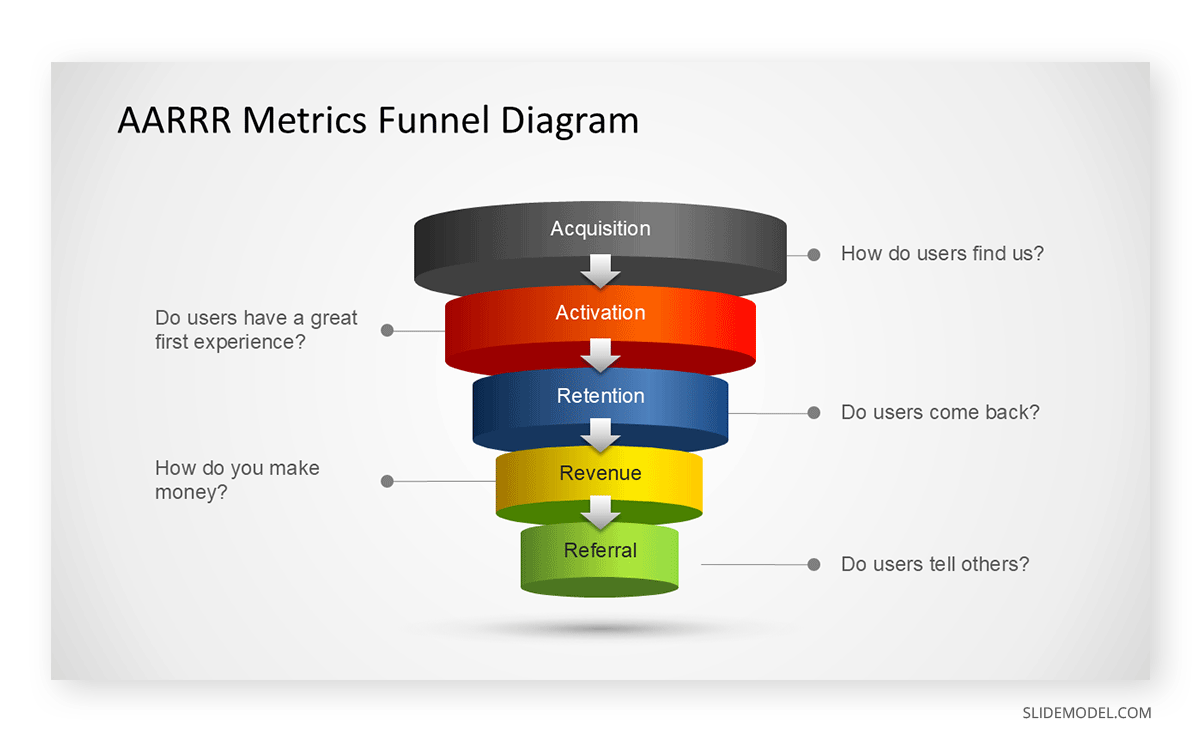
In a presentation context, AARRR is powerful because it provides a linear growth story. You can walk your audience through how you’ll attract users, how you’ll engage them, and how those engagements will ultimately convert into revenue. Stakeholders, whether investors, executives, or partners, want to see that your growth engine isn’t based on guesswork but on measurable milestones across the customer journey.
Why does AARRR matter? Because acquisition is often the first obsession of new products. Companies believe that if they can attract enough users, growth will follow. By presenting AARRR, you show that you’re aware of every step beyond acquisition. It’s not enough to generate installs or signups; you need a plan for keeping those users, activating them into actual customers, and monetizing their behavior.
When you structure your slides around the AARRR framework, each stage becomes a chapter in your story. For instance, “Acquisition” might showcase your marketing plan, “Activation” could highlight onboarding design, “Retention” your engagement strategy, “Referral” your viral loop, and “Revenue” your monetization model. The clarity of this sequence makes AARRR one of the most widely used frameworks for product presentations.
What Is the RARRA Model?
RARRA is a newer framework that flips the traditional order of AARRR to emphasize what really matters in today’s product landscape: Retention first. Its stages are Retention, Activation, Referral, Revenue, and Acquisition. Instead of starting with how to acquire users, RARRA begins with the more complex question: how do we keep them?
In a presentation, RARRA demonstrates maturity. It signals to your audience that you understand acquisition is meaningless without retention. In industries such as SaaS, mobile apps, and subscription-based services, customer churn can hinder growth more quickly than any lack of acquisition. Showing RARRA in a presentation tells investors and partners that you prioritize long-term sustainability over short-term volume.
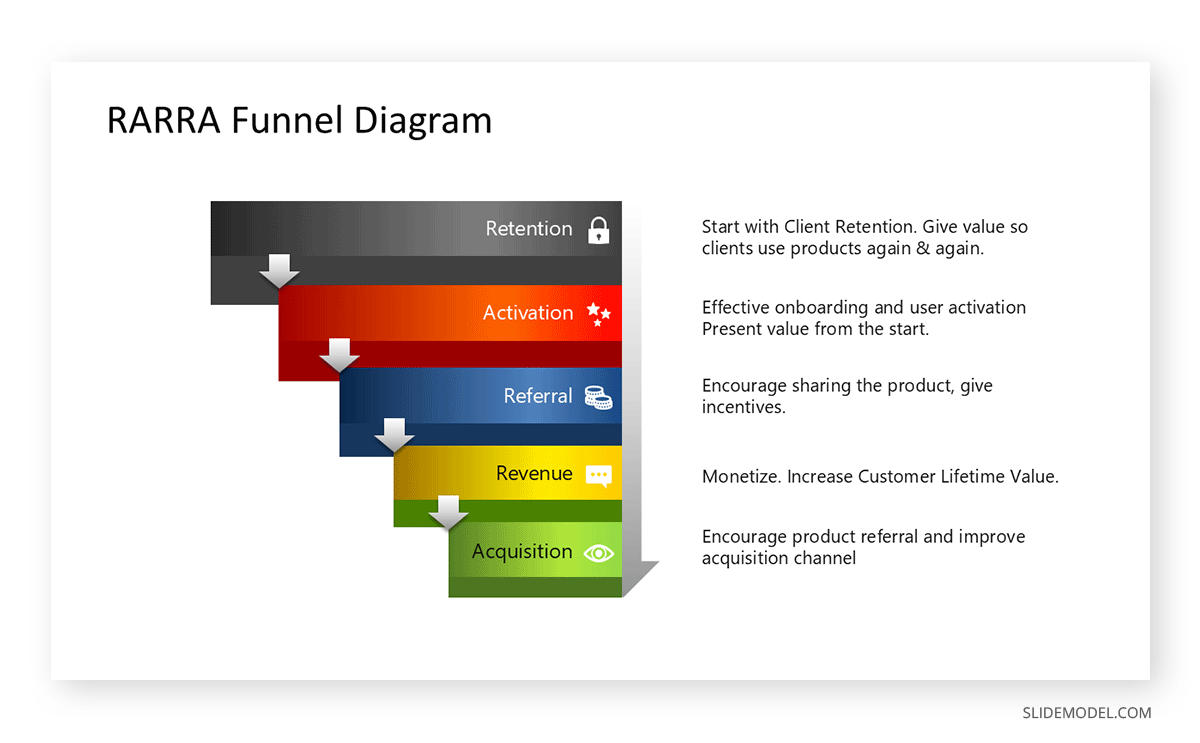
Why does RARRA matter? Because it reframes the product story around loyalty and value delivery. If your product retains users, activation flows more naturally: people who stick around will explore, engage, and generate referrals. Revenue then follows retention, and acquisition becomes the final stage: fueling growth once you’ve proven the product is sticky enough to sustain it.
When you use RARRA in a presentation, your slides don’t start with marketing channels or ad spend. Instead, they begin with cohort retention curves, customer success initiatives, and engagement metrics. You’re essentially saying, “We know how to keep people first, and that’s why scaling acquisition makes sense later.” This order is especially compelling when presenting to investors or product teams, as it demonstrates that your growth strategy is not vanity-driven but value-driven.
How to Use AARRR in Presentations
When building a presentation with AARRR, you want each stage to become a self-contained but connected slide. Think of it as a narrative arc:
- Acquisition: Present your marketing channels, campaigns, and partnerships. Use data on CAC (customer acquisition cost) and projected reach.
- Activation: Show how the first user experience is designed. Screenshots, flows, or demo videos work well here.
- Retention: Display early retention metrics, engagement features, or lifecycle campaigns to track progress.
- Referral: Visualize your viral loops, customer incentives, or referral benchmarks.
- Revenue: Present pricing tiers, upsells, and revenue forecasts.
The key to a presentation is sequencing. AARRR provides a straightforward order that aligns with how most stakeholders think: bring people in, get them active, keep them engaged, monetize, and expand. It is especially persuasive when your audience is less familiar with product metrics, because the logical order makes intuitive sense.
To make AARRR impactful in a presentation, avoid surface-level claims like “we’ll go viral.” Instead, anchor each stage with real numbers, case studies, or benchmarks. If you’re pre-launch, you can still use AARRR by outlining projected KPIs for each stage. For example, you might present a slide that says: “Acquisition goal: 5,000 trial users in the first 3 months via SEM and influencers. Activation goal: 60% complete onboarding. Retention goal: 40% D30 retention. Referral goal: 10% invite rate. Revenue goal: $200k ARR by year-end.”
How to Use RARRA in Presentations
Using RARRA in a presentation requires shifting the narrative. Instead of opening with marketing, you open with proof of stickiness. This is where you display retention curves, usage frequency, and strategies for reducing churn. By leading with retention, you make a bold statement: “We’re not chasing numbers, we’re building staying power.”
Your presentation flow under RARRA could look like this:
- Retention: Highlight customer stories, churn analysis, or loyalty initiatives.
- Activation: Present UX improvements, feature adoption metrics, or onboarding data.
- Referral: Show organic word-of-mouth growth, NPS scores, and referral incentives.
- Revenue: Break down monetization streams, upsell paths, or ARPU (average revenue per user).
- Acquisition: End with marketing, but framed as “now that we retain, acquisition scales ROI.”
Why is this persuasive? Because it inverts the standard business pitch. Instead of promising growth by spending on ads, you demonstrate that your product is strong enough to retain customers without constant re-acquisition. When presenting, this makes your story investor-friendly because it addresses risk: you’re not asking for money to fill a leaky bucket.
Practically, RARRA is best used in presentations where you already have usage data, pilots, or traction. It shows that your product has a foundation worth scaling. If you’re pre-launch, you can still use RARRA by presenting your retention strategy: “Our first priority is ensuring users stay engaged. Here’s how our design, support, and value delivery guarantee loyalty.”
FAQs
Should I always choose one model over the other in presentations?
No. Choose the model that best reflects your stage and data. For pre-launch, AARRR is easier to project. For post-launch with traction, RARRA demonstrates maturity.
Can both models be shown in a single deck?
Yes. Many presenters show AARRR to explain acquisition mechanics, then RARRA to demonstrate the retention-first strategy.
Which model do investors prefer?
It depends. Early-stage investors may prefer AARRR for clarity, while later-stage investors prioritize RARRA for sustainability.
How detailed should each stage be in the deck?
Provide at least one KPI per stage. Avoid clutter, but ensure that your audience can clearly connect metrics to the underlying growth logic.
Is AARRR outdated now that RARRA exists?
Not at all. AARRR is still widely used, especially for explaining funnels. RARRA is a complementary model, not a replacement.
Can I apply RARRA if my product is brand new?
Yes, but you’ll focus on strategy rather than data. For example, explain how you’ll build retention through UX and customer support.
Final Words
When presenting a product, frameworks like AARRR and RARRA are more than growth metrics; they are storytelling structures. They help you craft a presentation that isn’t just about features or revenue projections but about how growth unfolds over time. AARRR provides a clear, acquisition-first journey, while RARRA flips the narrative to emphasize retention as the engine of sustainable development.
As a presenter, your role is to select the framework that best aligns with your stage, product, and audience. If you’re seeking early buy-in, AARRR helps map the path from awareness to revenue. If you’re proving scalability, RARRA shows that your product is more than a flash in the pan: it’s built for loyalty and long-term value.
